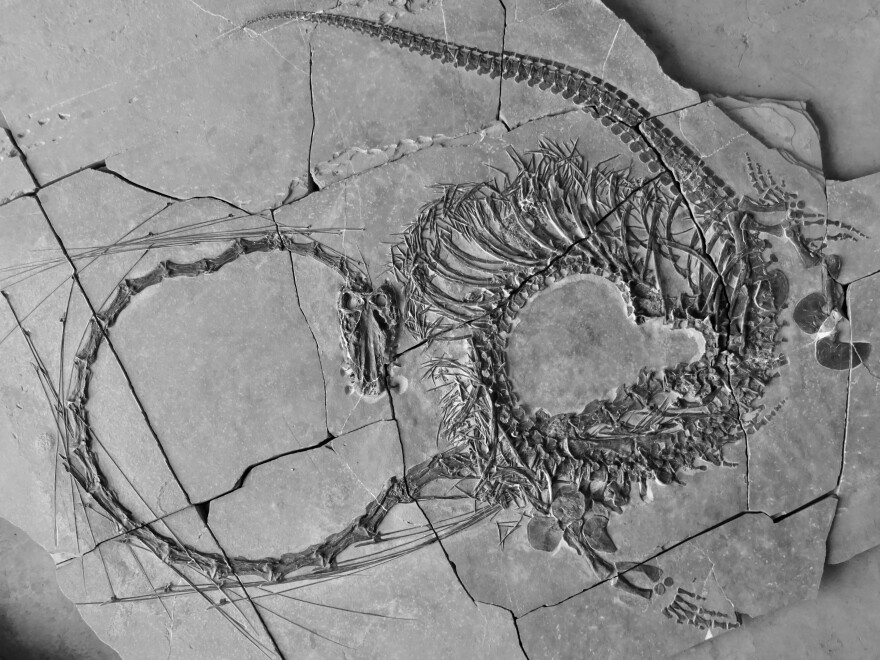It's a fitting discovery in the Year of the Dragon: A team of scientists has uncovered a complete fossil of an aquatic reptile that resembles a "Chinese dragon" because of its snake-like appearance and elongated neck.
The fossil of the Dinocephalosaurus orientalis dates back 240 million years to the Triassic period and was found in the Guizhou Province of southern China.
While the reptile was first identified in 2003, this latest discovery is more complete — about 16 feet long — and allowed the scientists to depict the strange, prehistoric creature in full for the first time.
"It is yet one more example of the weird and wonderful world of the Triassic that continues to baffle palaeontologists," said Nick Fraser, head of the National Museum of Scotland's Department of Natural Sciences, in a news release released Friday. "We are certain that it will capture imaginations across the globe due to its striking appearance, reminiscent of the long and snake-like, mythical Chinese Dragon."
Professor Li Chun from the Institute of Vertebrate Palaeontology and Palaeoanthropology said the find has been an international effort — the researchers behind the discovery are from Scotland, Germany, America and China.
The team studied the bizarre reptile at the Institute of Vertebrate Palaeontology and Palaeoanthropology in Beijing. Its flippered limbs and exquisitely preserved fish in its stomach indicate the reptile was adapted to the ocean, the researchers said.
"We used newly discovered specimens housed at the Chinese Academy of Sciences to build on our existing knowledge of this animal," said Chun. "Among all of the extraordinary finds we have made in the Triassic of Guizhou Province, Dinocephalosaurus probably stands out as the most remarkable."
Stephan Spiekman, a postdoctoral researcher based at the Stuttgart State Museum of Natural History, added that the team hopes future research will help unveil more about the evolution of this group of animals, in particular how the extraordinarily long neck functioned.
The neck has 32 separate vertebrae — longer than the creature's body and tail combined — and presumably played a key role in feeding, according to a study published by the Cambridge University Press.
Copyright 2024 NPR. To see more, visit https://www.npr.org.







